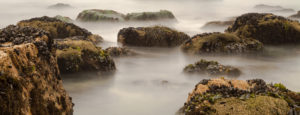On September 27 a twelve-story slab of granite cleaved from the face of the rock wall El Capitan, 1,800 feet above the valley floor in Yosemite. El Capitan is so steep that for a few moments the granite sheet may have cut through nothing but air—whizzing like a diving airplane as it fell.
One rock climber was killed at the base of the cliff. Yosemite Search and Rescue evacuated another injured climber. Within hours, a string of six more rockfalls pummeled the boulder field teams had been searching. The next day Greg Stock, Yosemite National Park’s resident geologist, was in Yosemite Village when he heard rolling thunder. An enormous dust cloud soon drifted eastward toward him, evidence of a rockfall even larger than the previous ones.
“At least every five days on average there will be a rockfall, probably in Yosemite Valley,” Stock says. The average 70 annually recorded rockfalls in Yosemite have killed 16 people in the park since 1857 and injured more than 100. When the dust finally settled in September, nearly 30,000 tons of granite had fallen from El Capitan—the equivalent of 1,600 full concrete trucks.
Rockfalls this size occur roughly every decade. They can be much larger. A rockfall at Ahwiyah Point in 2009 dropped 122,000 tons of rock, more than four times the size of the 2017 falls.
The September rockfalls and the Ahwiyah Point rockfall have something in common, though—no clear cause. Triggers are assigned to recorded rockfalls, but in nearly half of all cases the park database leaves the cause either unknown or unrecognized. Common triggers include earthquakes and powerful winter storms. Wintertime freeze-thaw cycles can also break loose rock as freezing water expands against cracks and then melts away.
Together with Brian Collins, a civil engineer with the U.S. Geological Survey, Stock found a link among some of the unexplained rockfalls—heat. “We realized a lot of them were occurring on sunny days,” Collins says. This finding jibed with reports from climbers: safety gear plugged tightly into cracks in the cool morning air would sometimes have shifted or even fallen out later in the day.
Stock and Collins tested this idea by placing a purpose-built “crack meter” in one of Yosemite’s many cracks in 2013. After three-and-a-half years of study their data showed the crack “breathing” in and out about one centimeter each day, and a cumulative expansion of one millimeter per year. The stress of this repetitive movement could, according to Stock and Collins, weaken the bonds between chunks of rock over time, like bending a paper clip back and forth. Just like a paper clip, these rock joints eventually fatigue and break.
The hottest days of summer cause cracks to expand to their maximum widths, but the greatest daily in-and-out movements, and the greatest stresses to rock joints, come in shoulder months like October and March when the change between the day’s high and low temperatures is the greatest. Yet when Collins and Stock examined the list, they found that roughly 15 percent of Yosemite rockfalls with either a heat-stress or unidentified trigger occurred at the hottest times of day in the hottest months of the year—more than you’d expect if the distribution of rockfalls was random.
The rockfalls in September happened on warm days after a cold snap in the hottest summer in California history, but they’ll go into the database as occurring because of “unrecognized” causes, to flag them for future study, Stock says. Rising global temperatures might affect the occurrence of some types of rockfalls in the future, but it’s still unclear how much. “The rock that makes up El Capitan may undergo temperature extremes and cycles that it has, as of yet, not experienced,” Collins notes. “It’s possible that higher maximum temperatures could cause new stresses with potentially new effects.”
Stock and Collins are now studying another hotspot for granite “exfoliation”—the geological term for layers of granite sloughing off over time—called Twain Harte Dome in the Sierra Nevada foothills surrounding Highway 108. A YouTube video posted in 2014 shows the geological equivalent of spontaneous combustion at Twain Harte: a granite sheet suddenly factures, busting shards of granite into the air with no apparent cause.
The activity makes the granite dome a perfect laboratory for Stock and Collins and represents the next step in their research. By monitoring cracks with a high likelihood of exfoliating they’re able to measure how much a crack deforms in the days and hours leading up to a fracture.
Alexander Fox is in the UC Santa Cruz Science Communication Program and a former Bay Nature editorial intern.





